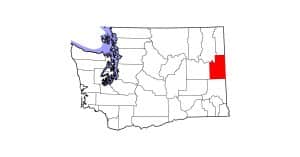Soccer Device Could Help Assess Riding Arena Footing

A lawnmowerlike device designed to provide objective feedback about soccer terrains might offer useful information about the quality of riding surfaces. And that could lead to better performance and fewer musculoskeletal injuries, said Menke Steenbergen, of Ipos Technology, in Eindhoven, Netherlands.
The Hi-Pitch Screener (HiPSter) machine runs over grassy soccer turfs to assess five aspects of the terrain: hardness, shock absorption, energy resistance, vertical displacement, and rotational resistance. The goals are to promote surface uniformity, performance of the ball, and injury prevention, Steenbergen said.
“That’s when I thought, ‘Hey, (this might help in) preventing injuries in horses,’ since we know that surfaces are also really important,” said Steenbergen during her presentation at the 2022 International Society for Equitation Science (ISES) Conference, held Aug. 9-12 in Hartpury, U.K.
In a pilot study, Steenbergen and her fellow researchers used the HiPSter to assess three horse arenas made of sand or fiberlike material. One of the arenas was heavily ridden on regularly, and another was used very infrequently, with little regular management. Use of the third fell somewhere in between those two extremes. The team measured seven to 13 locations in each arena and compared those results to standardized qualitative footing measurements.
They found that the transportable device provided reliable feedback about hardness, shock absorption, energy resistance, and vertical displacement, Steenbergen said. The data showed not only significant differences from one arena to the other, but also wide differences within each arena. Shock absorption could vary by 39% and energy restitution by 24%.
That was even true of the newest and most expensive footing, Steenbergen added. “It was very flat and nice to look at,” she said, “but then you look at the numbers and see that it’s different values all around the arena. You think of how the horse experiences that. Uniformity is very important.”
However, the HiPSter wasn’t perfectly suited for riding arenas, said Steenbergen. Rotational resistance was unreliable—probably because of the way the device acts on sand as opposed to grass soccer turfs. “The push down wasn’t hard enough to give us usable data on a sand surface,” she said.
While alterations would be needed for a similar device to fully evaluate equine riding arenas, Steenbergen believes it could be done. Additionally, the machine has the benefit of being entirely automatic, rolling over surfaces without human interference. “There’s no more influence of people doing the measurements,” she said.
“I do see potential for measuring riding ring surfaces in an automated way in the horse industry,” said Steenbergen. “Research has shown the relationship between the quality of equine surfaces and horse injuries. It would be beneficial if the key performance parameters of a surface could be easily measured on a regular basis using a mobile automatic machine like this, so actions regarding maintenance of the surface can be data-driven. This will improve the overall surface quality in horse arenas.”

Written by:
Christa Lesté-Lasserre, MA
Related Articles
Stay on top of the most recent Horse Health news with












